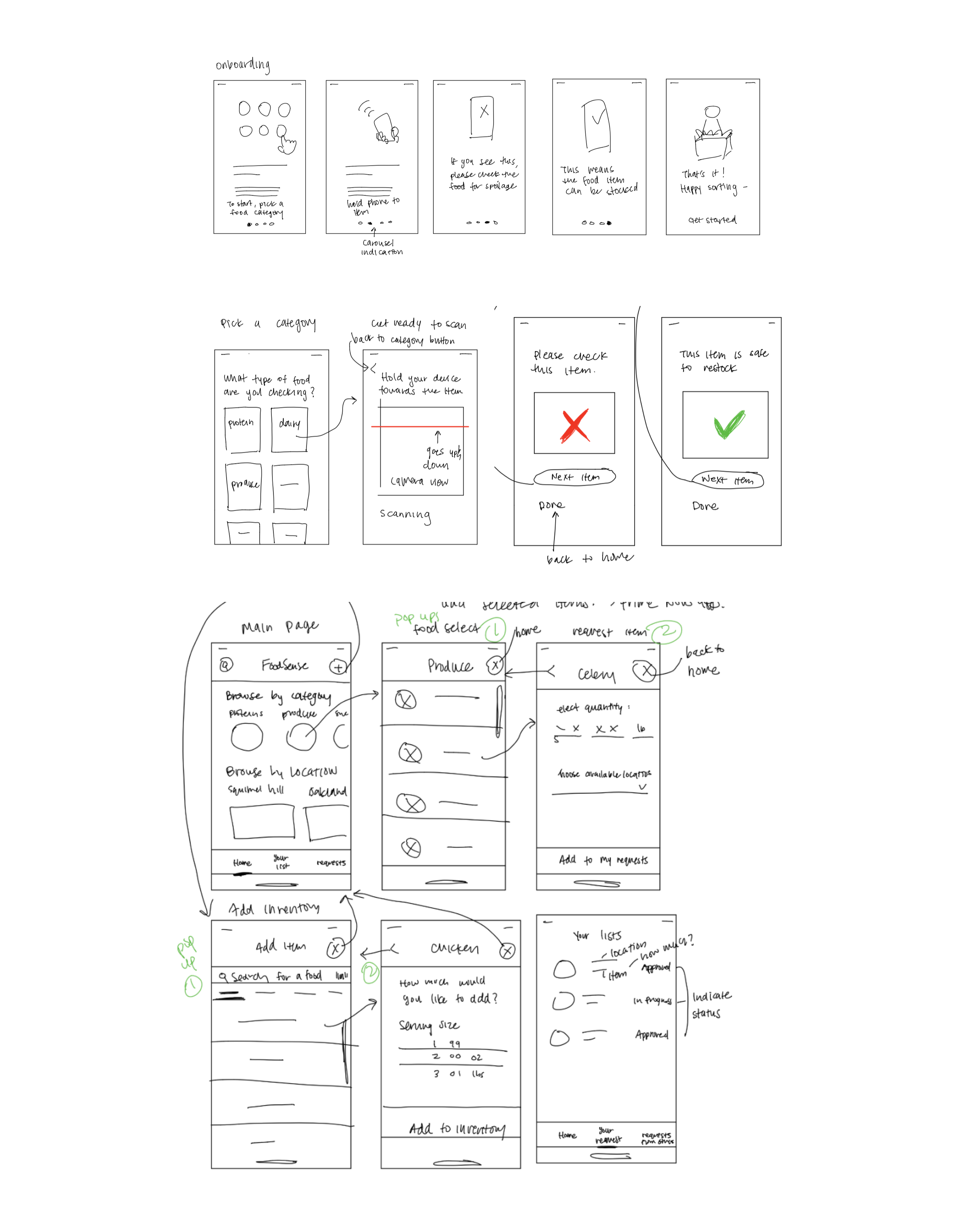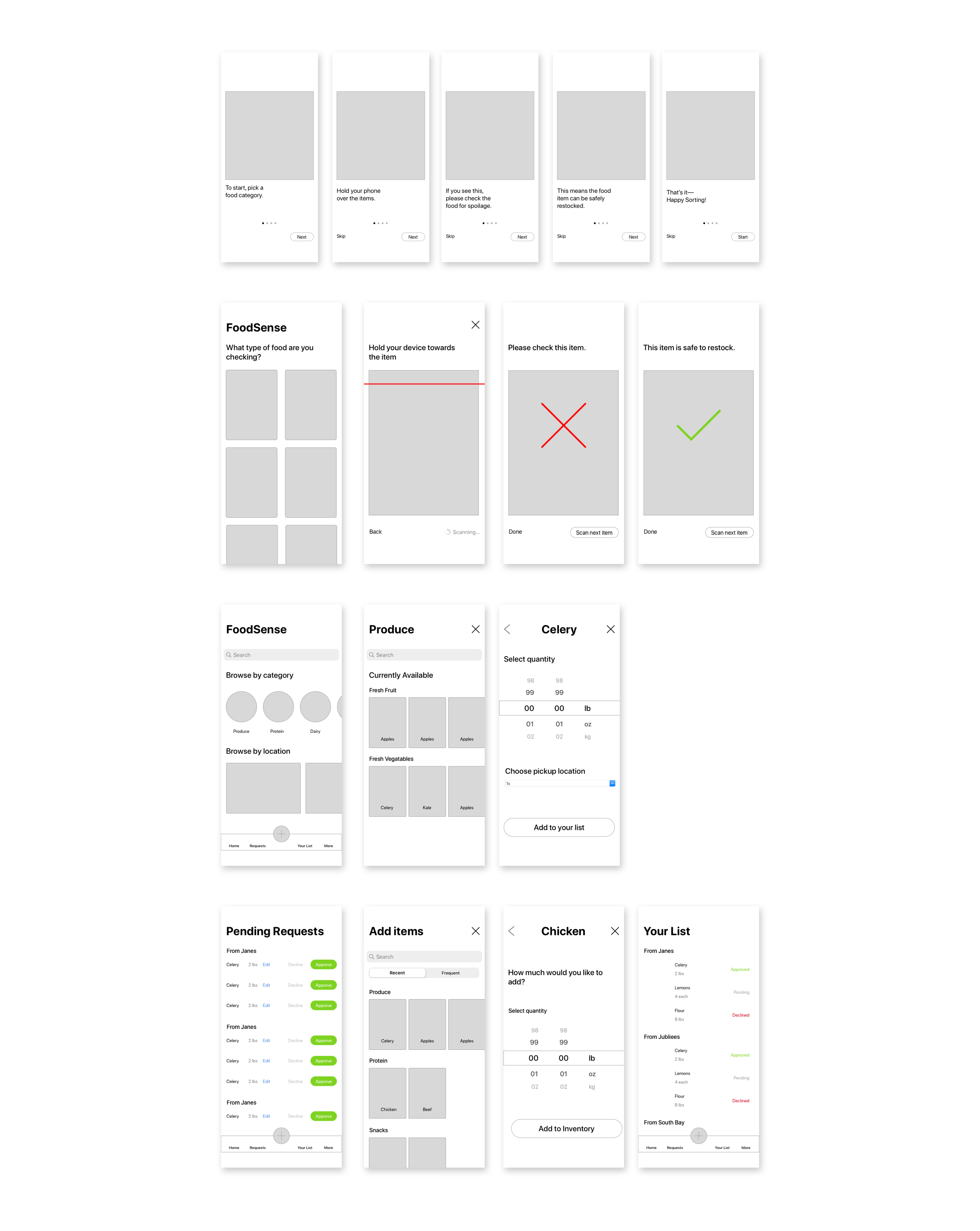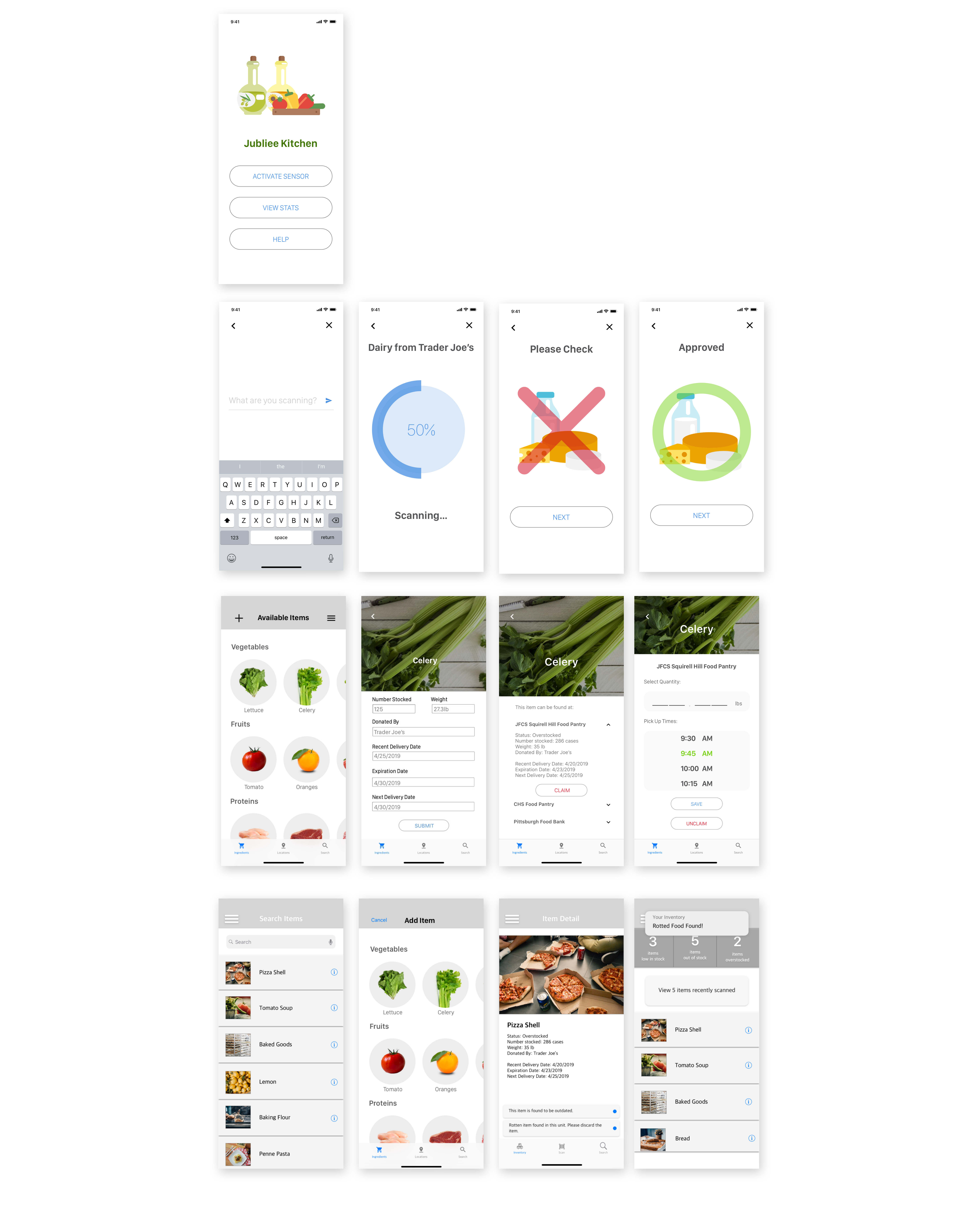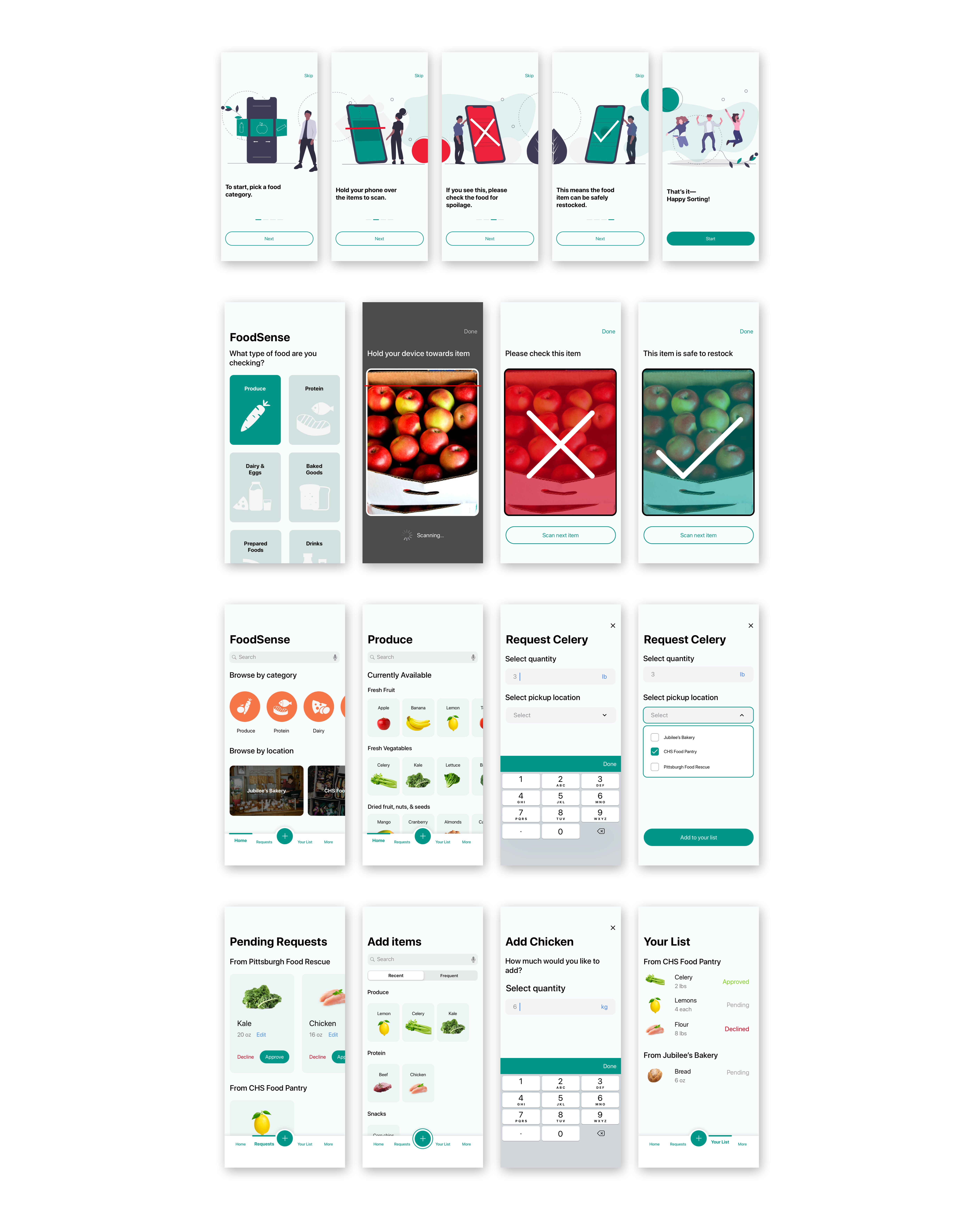FoodSense
Smart Inventory Management for community resources
What I did
- Primary Research
- Storytelling
- Ideation
- Final Screen Designs
Internet of Things for Civic Engagement
Spring 2019 Interaction Design Studio II
In collaboration with Felix Liu, Stacie Nam, Hamza Qureshi
How might we use IoT to foster civic engagement and an exchange of value between food communities?
Currently, there lacks a system which helps food banks, soup kitchens, and food pantries manage their inventory- resulting in loads of food waste every year. Using sensors and IoT, we believe that we can reimagine the way that sensors can help with food storage in food communities. We created FoodSense an IoT system that helps these communities distribute food in need through the sensing of inventory. This creates an exchange of value between all parties, with food distributed in a more timely and appropriate manner.
Problem #1
Volunteers have trouble sorting food.
Often times, soup kitchens, food pantries, and other food communities recieve loads of almost expired or leftover food from restaurants, bakeries, and grocery stores. With FoodSense, volunteers who are there to sort the food items are able to help detect food that is going bad or needs to be thrown out.
Onboarding

Allow for quick detection of spoiled food
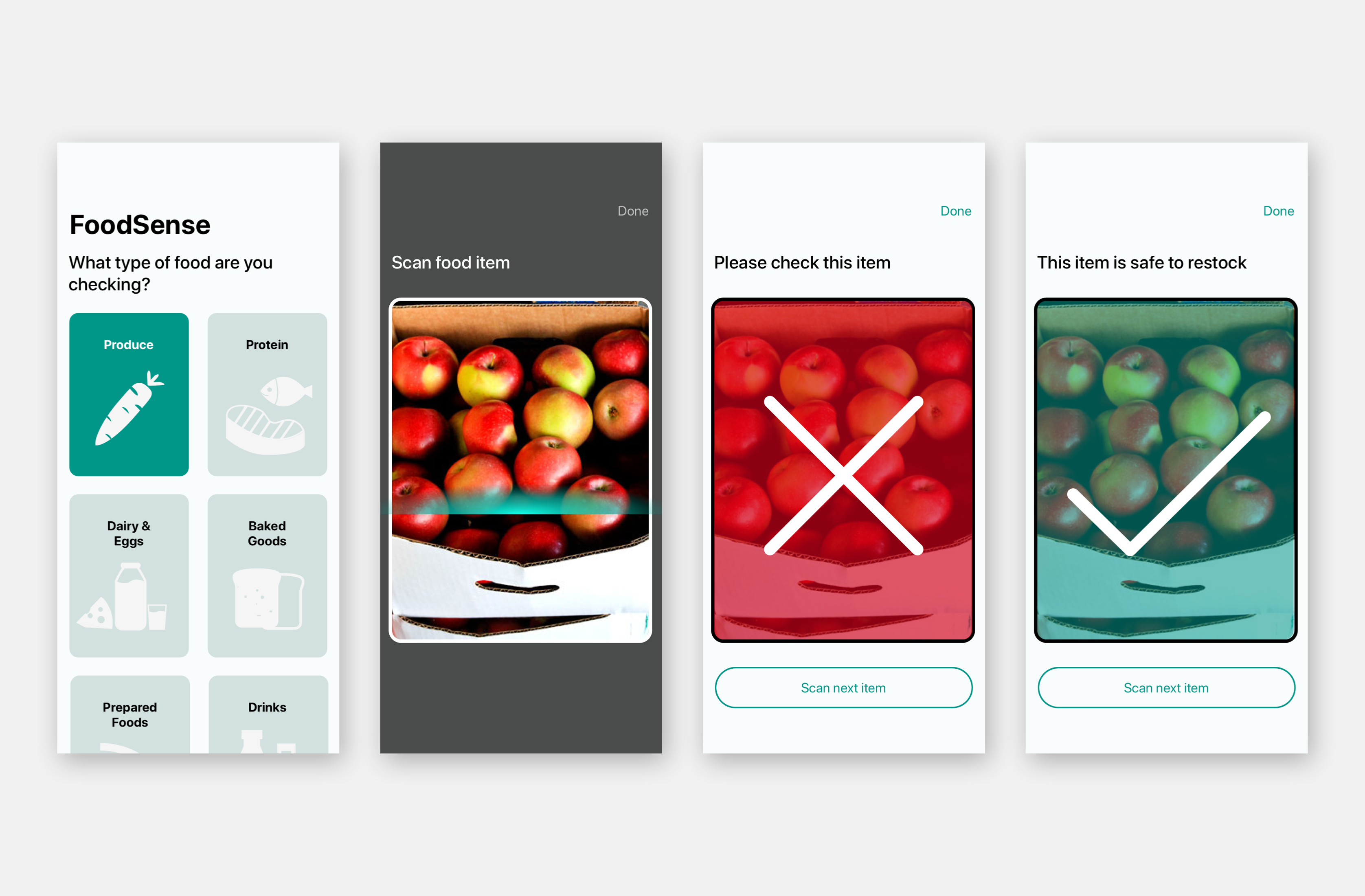
How it Works
Volunteers will attach a food sensor to the back that is linked to the app. They scan the food items with their phone which allows volunteers to quickly sense the state of the food.

Sensing Irregular Growth in Food

Sensing Gas Emissions in Food
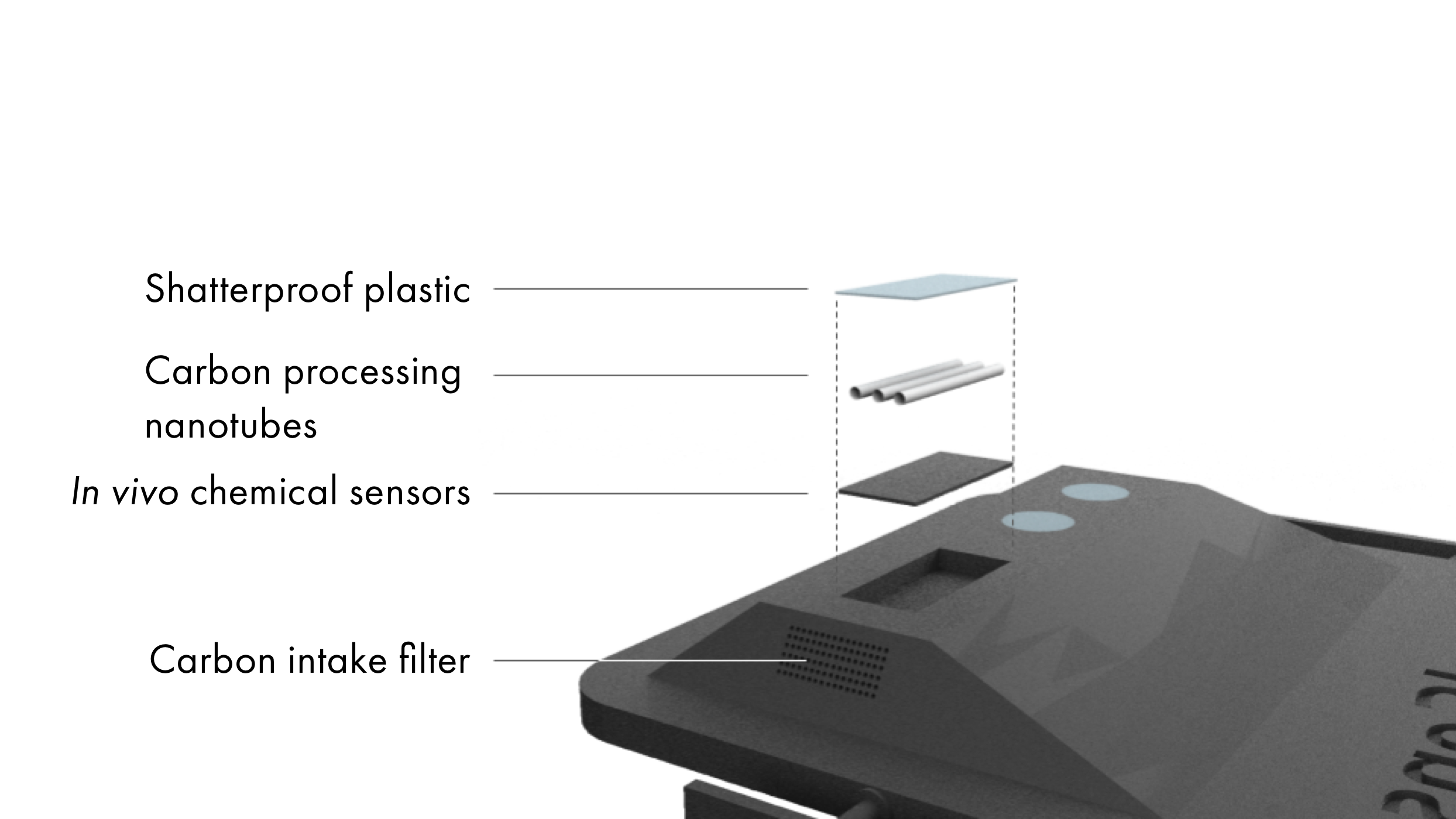
Problem #2
Overstocked items take up inventory space, while understocked items cannot be well-distributed.
The second research problem I discovered was that inventory managers have to deal with excess, unwanted food items. From my visit to Jubilee's Kitchen, I found that they would get hundreds of one food item, but it is not what they need. They eventually throw away what is not being used while always short on food they need to feed the community.
Now, inventory managers can request items

approve, decline, and add extra food items
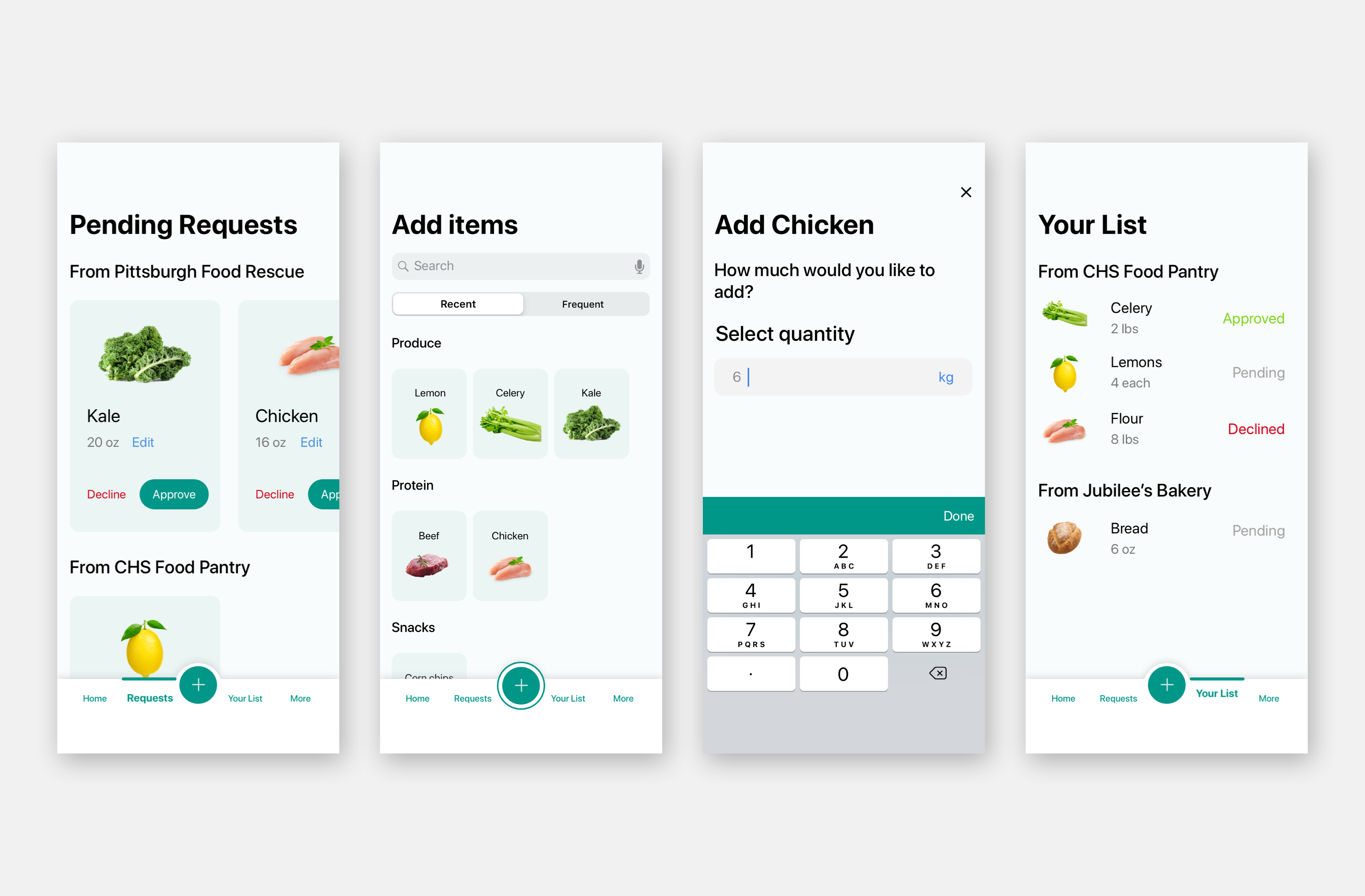
Smart Shelves
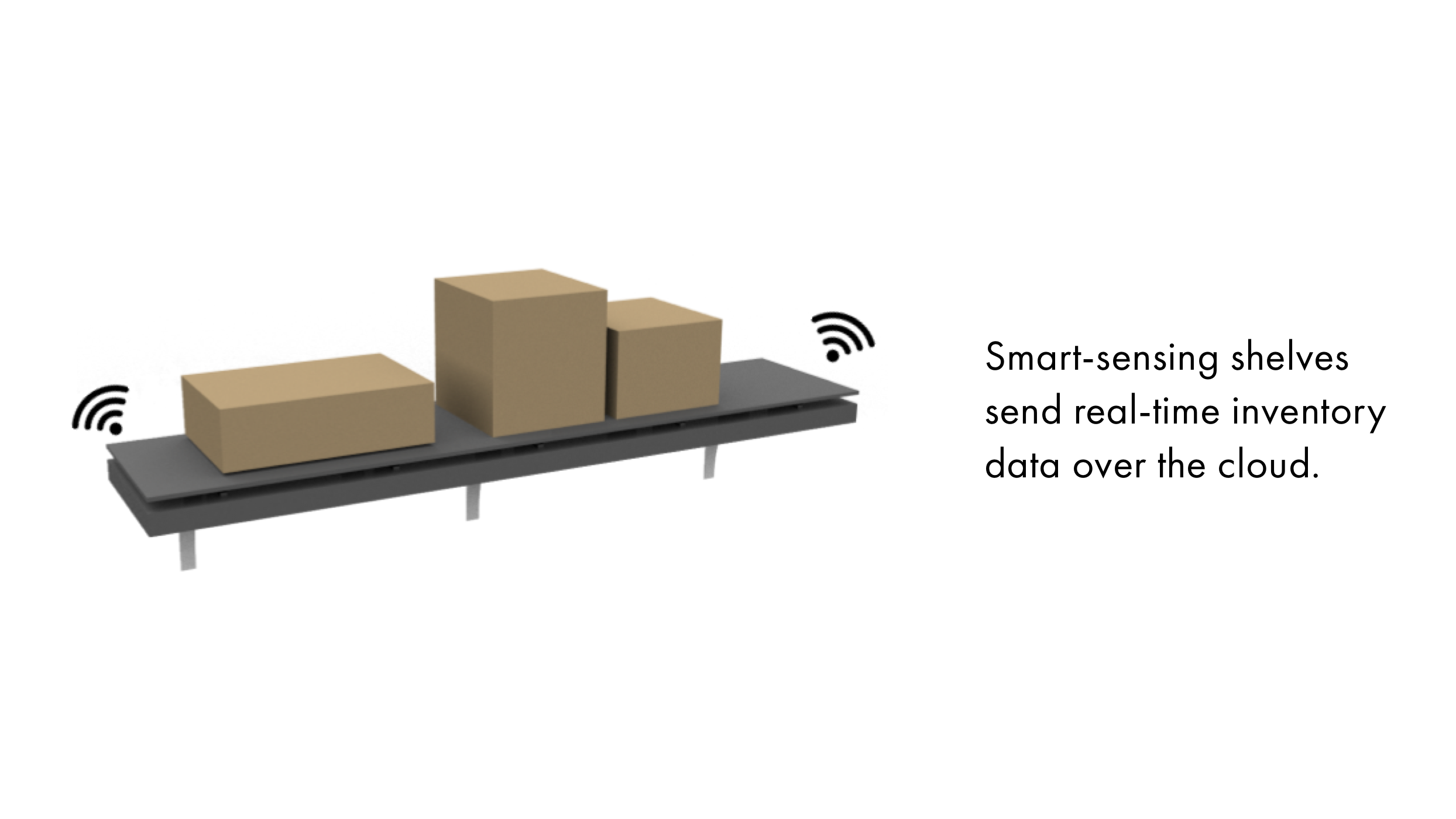
Most IoT sensors are cheap and affordable, making access to technology easy for these communities that are underserved. These shelves can make their lives easier by automatically uploading data, while serving as a necessary tool to reduce food waste.
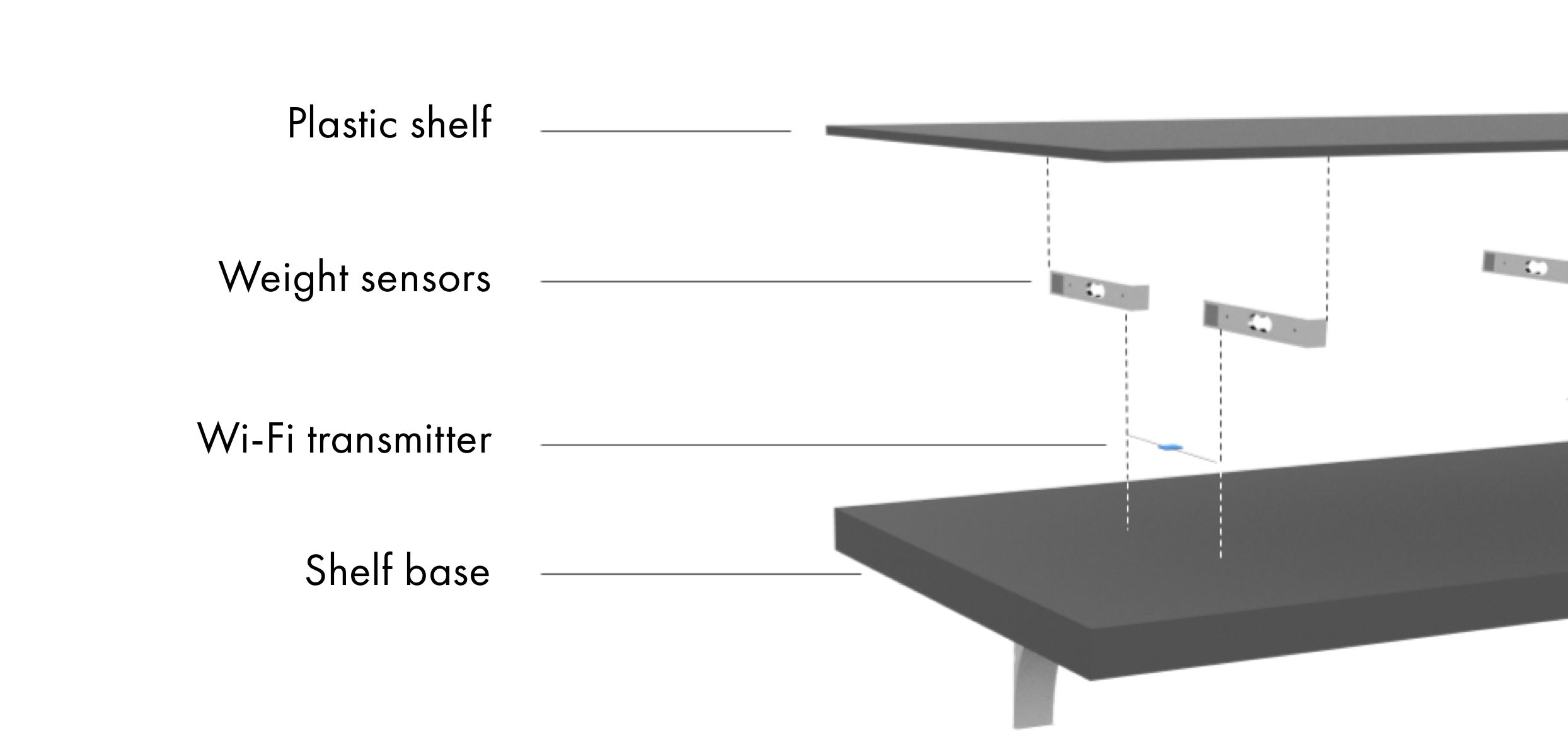
Product Video
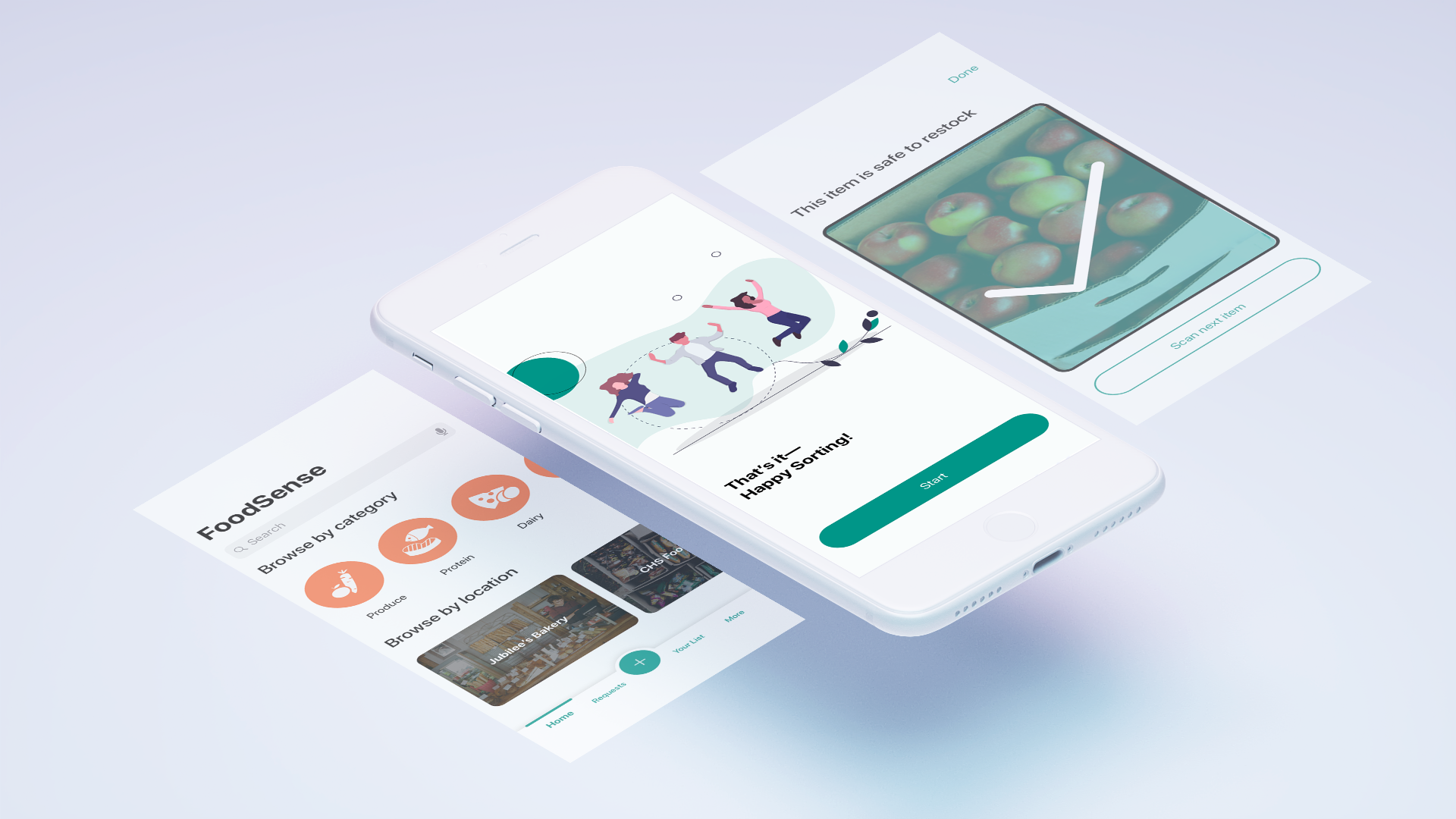
Workflow
Our Design Process
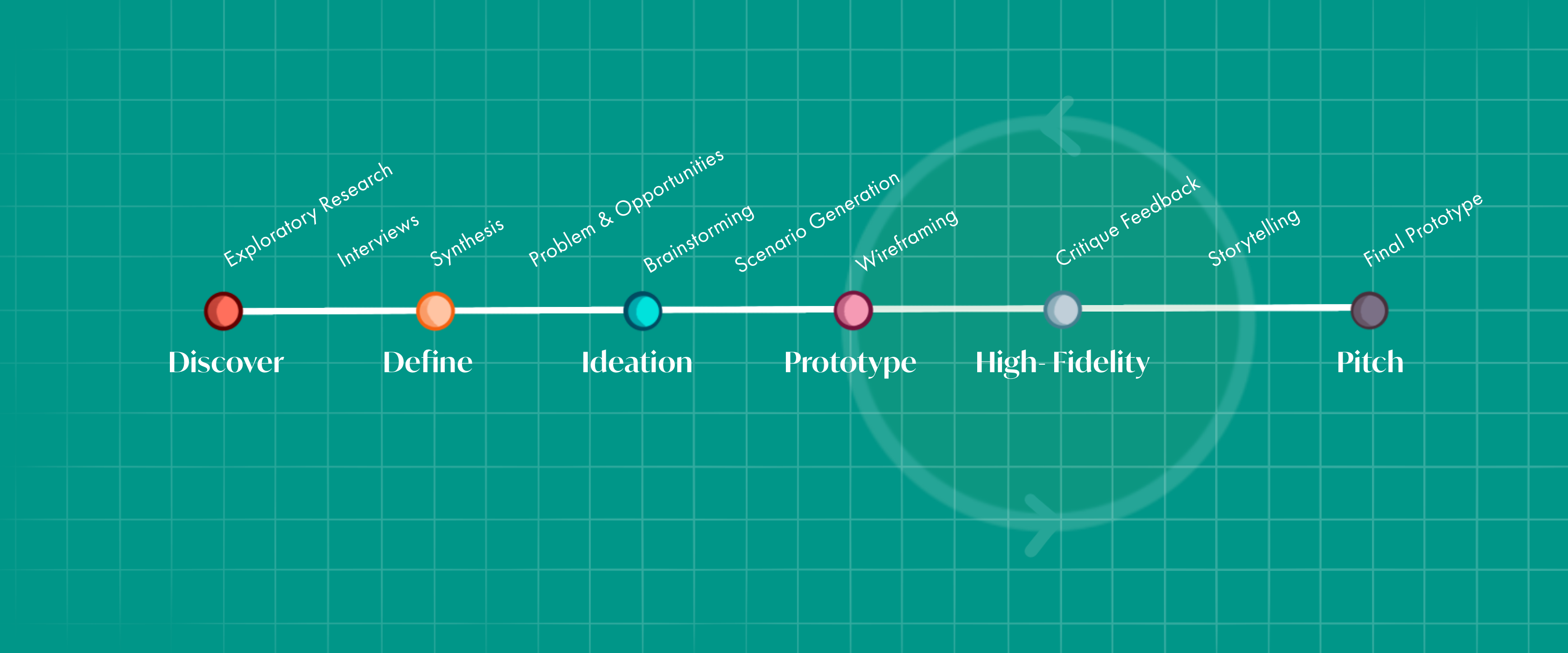
Research
Interviews
We went to Jubilee's Kitchen and CHS Food Pantry to interview volunteers, kitchen staff, and inventory managers. We conducted a stakeholder interview with a research plan to guide us with the right questions that would allow us to learn more about the pain points and opportunities.
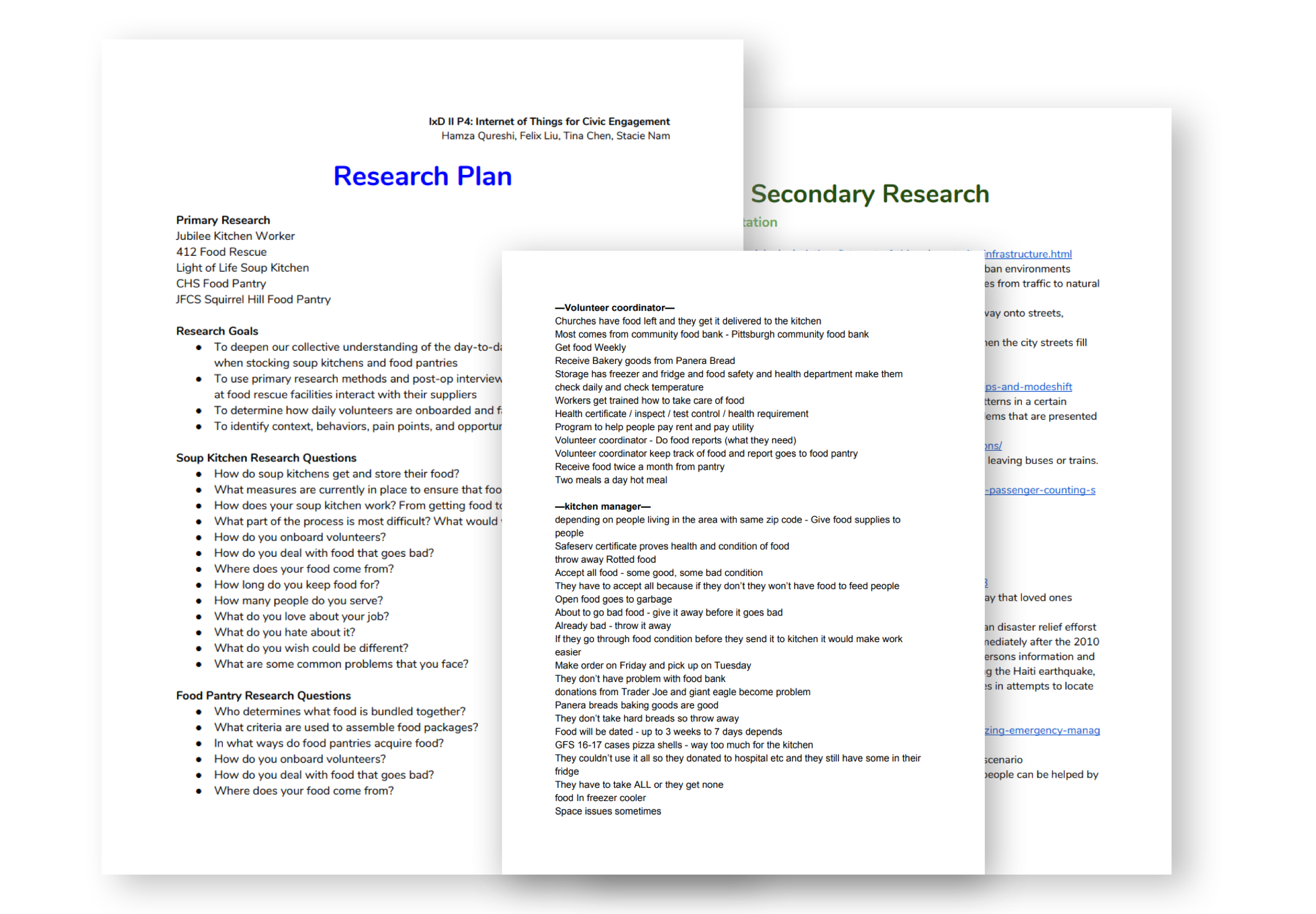
Synthesis
From our research, we found that there is little to no communication between these communities. Thus, we wanted to solidify the communication in order to better serve their mission for distributing food to those in need.
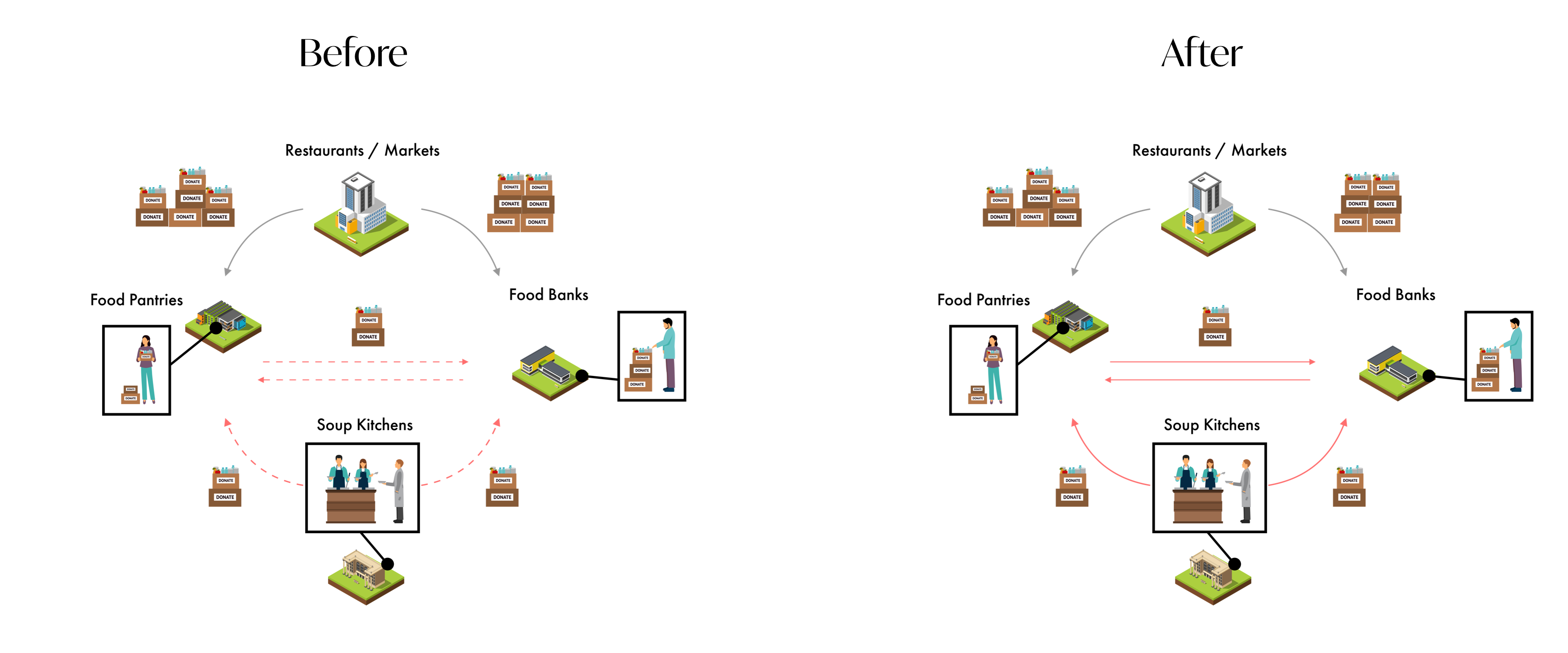
Our Preferred Future

Ideation
Out of 15 scenarios, we chose this one to guide our design as we believed it generated the most value for our stakeholders.
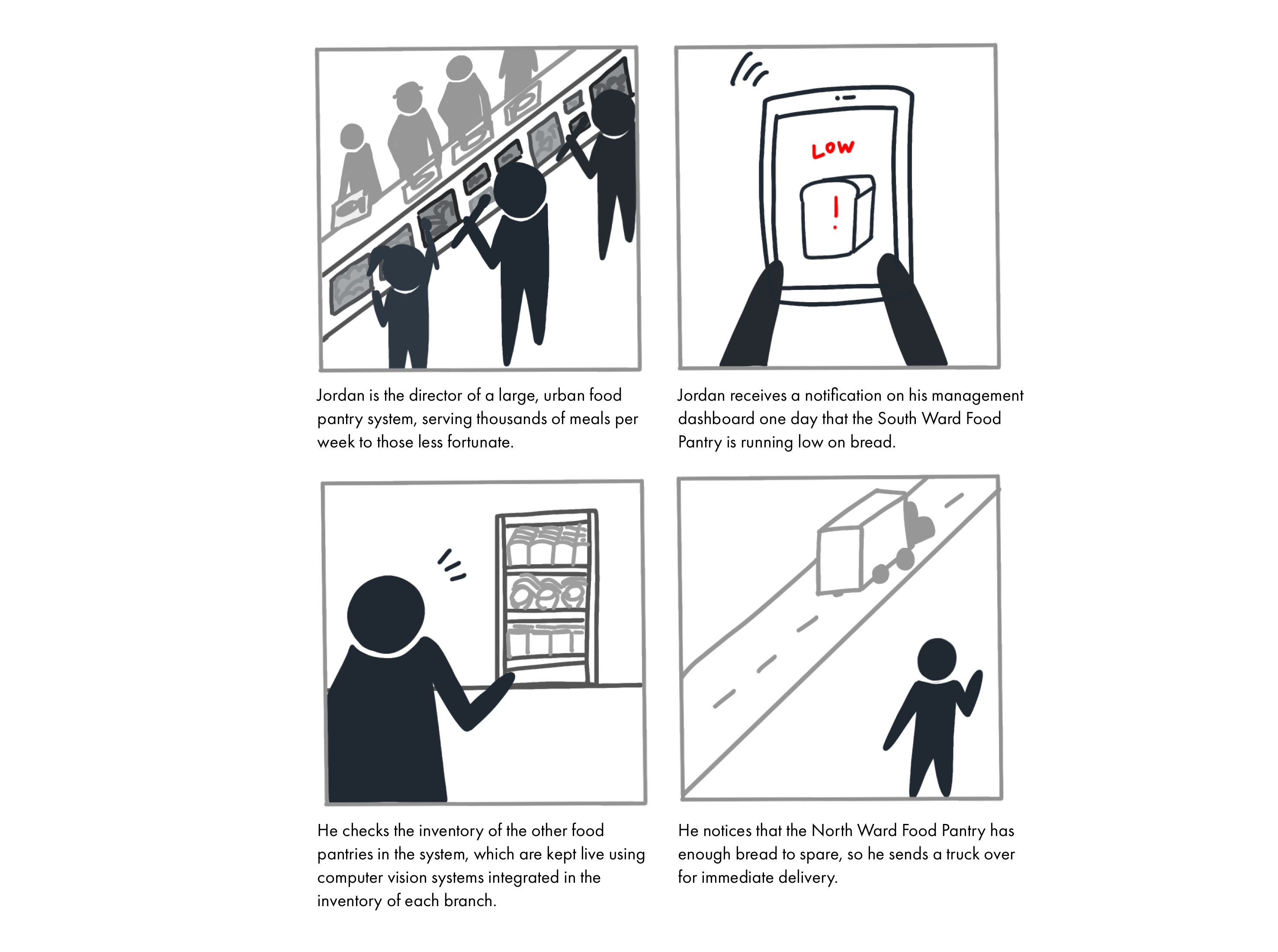
Thanks to this system, Jordan can ensure that all of the food pantry branches in the system have enough food for all.
Iterative Design
Jobs to Be Done for: Volunteers
- Welcome/ what app does
- Give clear steps for sorting process
- Be able to scan multiple food items
- End scanning process/ return to home page
Jobs to Be Done for: Inventory Managers
- Add inventory of extra food items
- Request items- by location or by food item
- Browse available ingredients
- Request pickup or dropoff for selected items
Takeaways
My Final Thoughts
I was able to investigate many domains for civic engagement, so it was difficult to just pick one to innovate in. I learned that it is important to embrace the iterative process of research and design so that key features and the right IoT sensors could be of value in our final product.


